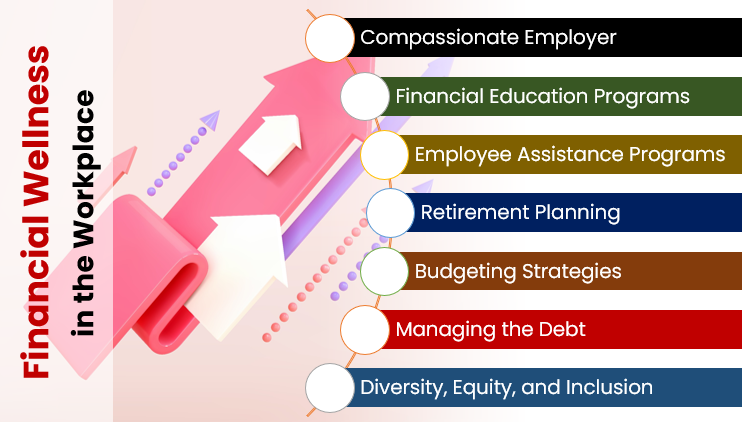Financial Wellness in the Workplace
Introduction:
In the intricate tapestry of employee well-being, financial wellness emerges as a thread that intricately weaves through the fabric of our lives. As organizations increasingly recognize the importance of holistic employee health, the spotlight on financial wellness in the workplace has intensified. In this article, we embark on a gentle exploration of the significance of financial wellness, the role of employers, and the nurturing environment required for employees to flourish.
Understanding Financial Wellness:
Financial wellness extends beyond the balance in a bank account; it’s a state of being where individuals feel confident and in control of their financial present and future. In the workplace, this translates to employees who are not only productive but also content and secure in their financial journey.
The Impact of Financial Stress:
Financial stress, akin to an unwelcome guest, can linger in the minds of employees, affecting their overall well-being and work performance. The weight of debt, uncertainty about retirement, and the daily grind of managing expenses can cast a shadow on an otherwise bright professional life.
The Compassionate Employer:
Enter the compassionate employer, a guide and supporter in the financial well-being journey of their workforce. Employers today are increasingly recognizing their pivotal role in fostering an environment where financial wellness can flourish.
Financial Education Programs:
One of the cornerstones of a compassionate workplace is the implementation of robust financial education programs. These initiatives go beyond the paycheck, offering employees valuable insights into budgeting, saving strategies, and the art of prudent financial management.
In the Trenches with Employee Assistance Programs (EAPs):
Imagine a workplace where the well-being of employees is not just a slogan but a lived reality. Employee Assistance Programs, often associated with mental health support, have evolved to include a crucial component—financial counseling services. These programs act as a beacon, providing employees with a safe space to navigate their financial challenges.
Retirement Planning: A Journey, Not a Destination:
The golden years beckon, and retirement planning takes center stage in the financial wellness narrative. We delve into the intricacies of retirement planning, exploring why it’s not just about numbers but about envisioning a future where employees can savor the fruits of their labor.
Budgeting and Saving Strategies: A Symphony of Financial Harmony:
In the symphony of financial harmony, budgeting and saving play the leading roles. We guide employees through practical strategies, offering a gentle nudge towards mindful spending and the cultivation of a savings habit that withstands the test of time.
Managing the Debt Dilemma:
The specter of debt can cast a long shadow over financial well-being. In this section, we address the common challenges employees face with debt and provide gentle strategies for managing and, ultimately, reducing it.
Financial Wellness and Diversity, Equity, and Inclusion (DEI):
Diversity, Equity, and Inclusion initiatives extend their compassionate embrace to financial wellness. We explore the intersection of these crucial workplace facets, emphasizing the need for inclusive financial wellness programs that cater to the diverse needs of employees.
Remote Work and Financial Wellness: Bridging the Virtual Gap:
The rise of remote work introduces new dynamics to the financial wellness landscape. We explore the challenges and opportunities associated with nurturing financial well-being in a virtual environment, shedding light on how technology can be harnessed to support employees.
In the realm of employee well-being, a Relativeness Index Long Term Strategy takes center stage, emphasizing the need for sustained financial wellness. This strategy encourages organizations to consider the long-term impact of financial decisions, fostering stability over time.
What strategies do you believe are crucial for ensuring long-term financial well-being in the workplace? Share your insights and experiences below.
Conclusion: A Gentle Call to Action
As we draw the curtains on our exploration, the call to action is gentle yet resounding. Employers, employees, and the workplace community at large are invited to embark on a shared journey towards financial wellness. In the delicate balance of financial harmony, every contribution matters, and together, we can cultivate a workplace where prosperity is not just a goal but a lived reality.
Happy Investing!
This article is for education purpose only. Kindly consult with your financial advisor before doing any kind of investment.


